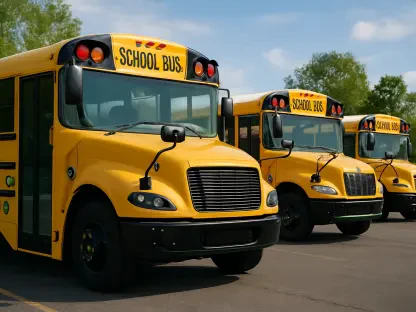In a landscape of tightening fiscal belts and soaring educational needs, Illinois finds itself at a critical juncture as public school funding demands for the upcoming fiscal year have surged to nearly $750 million, a figure that starkly contrasts with the state’s constrained budget outlook. Recent public hearings and a pivotal meeting of the Illinois State Board of Education (ISBE) in Chicago have laid bare the immense pressure on state resources, especially as Governor JB Pritzker has signaled a 4% spending cut across agencies due to uncertainties in federal funding. This gap between aspiration and reality paints a challenging picture for educators, advocates, and policymakers alike, raising urgent questions about how to prioritize resources while ensuring equitable support for students across diverse districts. As the state grapples with these competing demands, the dialogue surrounding K-12 education funding reveals both the depth of need and the complexity of finding sustainable solutions.
Navigating Fiscal Realities
Budget Cuts Loom Large
The looming specter of a 4% reduction in state agency spending casts a long shadow over Illinois’ K-12 education funding landscape, creating a palpable tension between ambitious requests and fiscal prudence. Governor Pritzker’s directive, prompted by unpredictable federal funding streams, has set a tone of caution for the upcoming budget cycle. While the collective ask for nearly $750 million in additional K-12 funding represents a significant decrease from last year’s staggering $2.2 billion, it remains a formidable sum against the backdrop of potential cuts. This financial climate forces a reevaluation of priorities, as stakeholders must navigate the delicate balance between maintaining essential programs and accommodating new initiatives. The reality of reduced resources underscores a broader challenge: ensuring that cuts do not disproportionately impact vulnerable student populations who rely heavily on state support for equitable educational opportunities. This fiscal constraint shapes every discussion, serving as a reminder of the limited pie from which education must be funded.
Impact on Strategic Planning
Beyond the immediate threat of budget cuts, the fiscal constraints are reshaping how the ISBE and educational advocates approach long-term planning for K-12 schools in Illinois. With the state’s financial outlook uncertain, the focus has shifted toward maximizing the impact of every dollar allocated, pushing for data-driven decisions that target the most pressing needs. The structured timeline for budget formulation, including critical input from the Commission on Government Forecasting and Accountability in December and a final budget request approval on January 14 in Springfield, provides a framework for navigating these challenges. However, the uncertainty surrounding available resources complicates efforts to plan for sustainable growth in education funding. This environment demands innovative thinking, as districts and state officials must anticipate potential shortfalls while advocating for investments that yield measurable improvements in student outcomes. The strategic planning process, therefore, becomes a high-stakes exercise in prioritization and adaptability.
Shifting Priorities in Funding Requests
Emphasis on Mandated Categorical Programs
A notable shift in the funding dialogue this year centers on mandated categorical programs, which cover critical areas such as special education, transportation, and school meals, emerging as the most frequently requested item with a proposed $100 million increase. Unlike the Evidence-Based Funding (EBF) formula, which has historically dominated funding conversations with its $350 million annual boost to underfunded districts, these categorical programs address expenses often shared between state and local districts on a prorated basis. This pivot in focus reflects a growing recognition among stakeholders of the financial burdens outside the EBF framework that directly impact day-to-day school operations. The urgency to bolster these programs highlights a broader concern: without adequate state support, local districts may struggle to maintain essential services, potentially exacerbating inequities. As advocates push for this funding, the challenge lies in ensuring these often-overlooked costs receive the attention needed to sustain a functional education system.
Diverse Educational Needs in Focus
Alongside the emphasis on mandated categorical programs, the spectrum of funding requests reveals the multifaceted needs of Illinois’ K-12 system, encompassing 51 distinct categories that range from foundational to specialized initiatives. Significant allocations include $68.5 million for a newly approved literacy plan, $60 million for early childhood block grants, and $30 million each for special education teachers and multilingual education programs. This diversity underscores the complex tapestry of educational challenges across the state, from addressing literacy gaps to supporting young learners and diverse student populations. Each request represents a piece of a larger puzzle, aiming to build a more inclusive and effective education system. Yet, with fiscal constraints looming, the question remains how to equitably distribute limited resources among these competing priorities. The breadth of these demands illustrates both the ambition to improve outcomes and the practical difficulty of funding every critical area adequately.
Addressing the Funding Gap
Lessons from Recent Deliberations
Reflecting on the recent public hearings and ISBE meeting in Chicago, it became evident that the consensus among advocates and stakeholders was a shared urgency to secure increased K-12 funding, even as fiscal realities tempered expectations. The robust dialogue revealed a collective understanding that while the $750 million request was ambitious, only a fraction was likely to be met given the state’s budget limitations. This acknowledgment did not diminish the passion for educational investment but rather sharpened the focus on strategic allocation. The shift toward prioritizing mandated categorical programs alongside core EBF funding signaled an evolving perspective on where gaps were most acutely felt. These discussions provided valuable insights into the nuanced balance between immediate needs and long-term goals, highlighting the importance of transparent communication between state officials and local districts. Past deliberations served as a critical reminder that collaboration would be key to navigating the fiscal challenges ahead.
Pathways to Sustainable Solutions
Looking back, the process of addressing Illinois’ K-12 funding gap during these recent engagements pointed toward actionable next steps that could guide future efforts. Prioritizing a balanced approach that safeguarded both core educational programs and essential categorical services emerged as a viable strategy to mitigate the impact of budget constraints. Additionally, leveraging data from the upcoming financial forecast in December could inform more targeted allocations, ensuring resources reached the most underserved areas. Exploring innovative funding mechanisms, such as public-private partnerships or reallocating existing state funds, also surfaced as potential avenues to supplement traditional budgets. Ultimately, the path forward rested on fostering a collaborative framework where policymakers, educators, and community leaders worked together to advocate for sustainable investments. These considerations from past discussions offered a blueprint for bridging the divide between educational needs and available resources, setting a precedent for future budget cycles.









